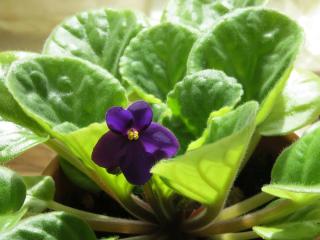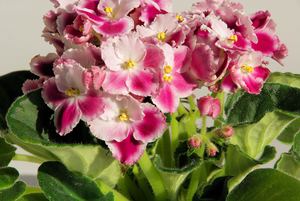

Saintpaulia is a cute indoor plant native to Africa.
Summary:
Name – Saintpaulia ionantha
Family – Gesneriaceae
Type – indoor plant
Height – 8 to 12 inches (20 to 30 cm) indoors
Exposure – veiled
Foliage – evergreen
Flowering – all year round
Sometimes called Cape violet or African violet, its blooming can sometimes last for most of the year!
Saintpaulia likes a tight fit in its pot and thus doesn’t need to be repotted immediately.
After that, every 2 or 3 years and preferably in spring, repot your saintpaulia in a pot of a very slightly larger size.
During the re-potting
 Surrounding temperatures must be lower than 60°F (16°C) to ensure proper settling in.
Surrounding temperatures must be lower than 60°F (16°C) to ensure proper settling in.Propagation is possible in spring with cuttings.
Saintpaulia requires temperatures that oscillate between 65 and 74°F (18 to 24°C) and which never drops below 57°F (-13°C).
The temperature of a house or apartment are thus ideal for growing saintpaulia.
The best location for your saintpaulia is in a spot where there isn’t any direct sun on the plant, ever.
You can put gloxinia in the immediate vicinity of this plant because they both share the same growing conditions.
Regular but moderate watering is called for. Saintpaulia requires little water.
In spring and summer

Provide liquid flower plant fertilizer more or less once a month to extend the blooming as long as can be.
To retain a certain moisture level, it is best to put the pot on a bed of clay pebbles with water at the bottom.
In fall and winter
Reduce watering and wait for the soil to be thoroughly dry in the surface before watering again.
Stop adding fertilizer.
Most diseases targeted are the typical indoor plant diseases, red spider mite, scale insects, aphids and also powdery mildew.
A fabulous indoor plant, saintpaulia is vulnerable to aphids. To avoid this, often spray a pyrethrum-based insect killer.
Read also: